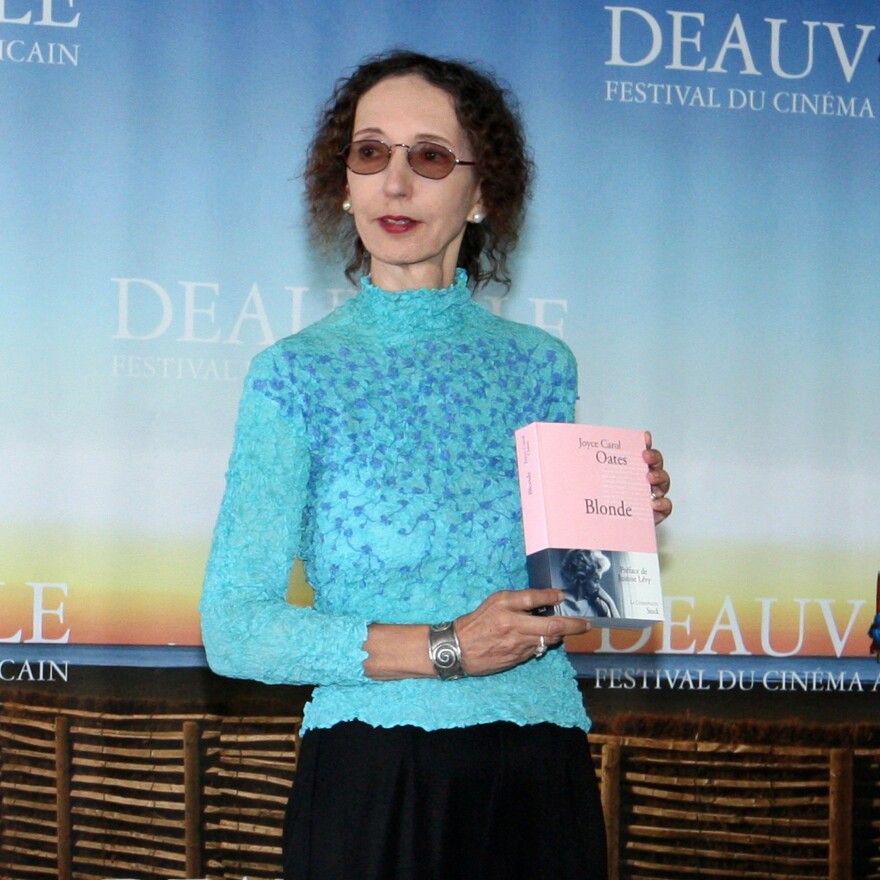Blonde tells the story of Norma Jeane Baker, from her childhood with an absent father and unstable mother, through her rise to stardom as Marilyn Monroe and her eventual suicide at the age of 36. Based on the bestselling novel by Joyce Carol Oates, at every turn in the Netflix adaption, the actress is mistreated, exploited and abused.
Director Andrew Dominik says he read Oates' novel 20 years ago. "I saw an opportunity of how to turn it into a film. Of how to take what she set up in the book, which is the childhood trauma. The idea of what childbirth might mean. The idea of the desire for the absent father to return and stabilize her mother. And then it seemed to me that there was a way to see the adult life through the lens of that trauma."
After he finished his 2007 film, The Assassination of Jesse James by the Coward Robert Ford, Dominik began to work on adapting Blonde.
"I wrote it in 2008, and it was just impossible to get it made," he says. "I think a lot of it was how it portrayed the men in the story. I think people felt that there was no market for feminine rage, and trauma and all that sort of stuff. But then #MeToo happened, and obviously, that was something that people actually were interested in."
The novel that inspired the film came about by chance. Oates says she had no particular interest in Marilyn Monroe when she came across a photo in the library.

"I saw a photograph of Norma Jeane Baker taken when she was about 15 years old. And she was a brunette. Very pretty. Little artificial flowers in her hair. And I was stunned because within 10 years, she was going to be one of the most famous names in the history of show business," she says.
That photo struck a chord in Oates' heart. "I was drawn to write this story of a very ordinary-seeming American girl, from a very lower economic background, who rises and becomes enormously successful. And famous, and then is destroyed in the process," she says.
The result was a 738-page novel that describes actual events in Monroe's life, but then imagines how she experienced them. So, the audience understands her but none of the people in the story do. Oates provides the voice inside Monroe's head, which as her life spins out of control, becomes more surreal and hallucinatory, mimicking the process of her anxiety.
Dominik says in his film he tried to preserve the novel's perspective. He uses unexpected camera angles, switching back and forth from color to black and white, shifting the picture aspect ratio.
"In early stages of development where she's relatively stabilized, the movie will proceed in a fairly straight-ahead manner," he says. "It's only once the rug is pulled out emotionally that it will start to get sort of phantasmagoric. And there's a sense of the past, or the unconscious terror rising up. And being indistinguishable from the present."
The director says the novel provided a richer source than any nonfiction could. "A documentary can tell you what happened. But I think that what the film and the novel are really dealing with are what is the meaning of Marilyn Monroe? Why is that woman on the subway grating the sort of American equivalent of Venus in the Shell, rising out of the sea? And what does she inspire in us that she continues to have this kind of resonance?"
Dominik adds our cultural obsession with Monroe stems from a rescue fantasy; we know she's doomed, but we can't save her. Oates felt it. While she has written 23 novels since Blonde was published in 2000, she says her Monroe story was the most wrenching novel she ever wrote.
"Blonde was very very difficult emotionally for me. And even though I knew that Marilyn would die at the end of my novel, I didn't realize how when I got to that point I would be so identified with her. There was no way out except what happened to Marilyn. I couldn't make up an ending where she's happily married. Or she runs away from Hollywood. I mean I couldn't make that up!"
The film version of Blonde is the first Netflix production ever with an NC-17 rating. In one scene a studio head rapes the starlet. In another, she's beaten by Joe DiMaggio, her husband at the time. One shot in an abortion sequence is presented from the fetus' point of view. Towards the end of the film, President Kennedy treats her like a disposable sex toy.

Dominik says people shouldn't be surprised that Blonde portrays Monroe's life as relentlessly unhappy.
"It's the story of a person who kills herself. It's also the story of a person who had everything that our culture is always screaming at us is desirable," he explains. "She was famous, she was beautiful, she had a glamorous job, she dated all the cool guys of the day—and she killed herself. Okay, what do we all want? And should we want that thing?"
Copyright 2022 NPR. To see more, visit https://www.npr.org.




